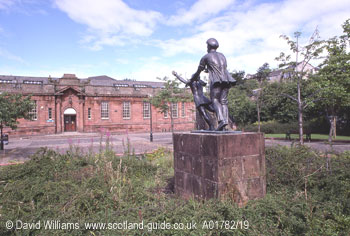Glasgow`s locomotive industry started in 1831 but it was not until 1861, when Neilson & Co. moved to Springburn, that that area was established as the hub of the industry. With ready supplies of coal and iron, the city was well-placed to dominate this specialist industry; in addition, steam engines had already been used for pumping out coal mines for a long time, allowing local manufacturers to gain expertise in the new technologies.
After various changes in the industry, the North British Locomotive Co. was formed in 1903 and was soon to become the largest locomotive manufacturer in Europe, producing about four hundred locomotives a year, exporting many of them all over the world. Up to its demise in 1962 the firm built an astonishing total of over 28,000 locomotives, including some of Britain`s most famous, such as the beautifully streamlined Gresley A1 Pacifics, the trainspotter`s dream. The collection is a great testament to the skills of the engineers who designed and built these wonderful locomotives. Much nicer than today`s rather characterless machines!
Fine examples of locally-manufactured locomotives can be seen in Glasgow`s Museum of Transport.
This article is based on the guidebook "The Glasgow Guide".

Springburn was the centre of Glasgow`s huge railway locomotive industry and when the factories closed the area`s economy was hit very badly.
The building in the background is Springburn Library and the sculpture stands on the land once occupied by the Hydepark Locomotive Works which was founded in 1862.
The Springburn Statue (by Vincent Butler) features a worker from the locomotive factories and the small girl represents hope for the future.